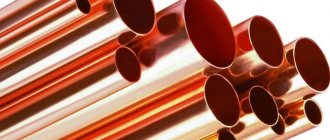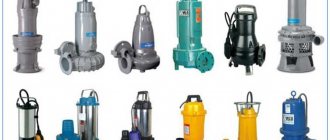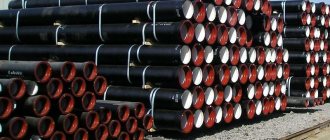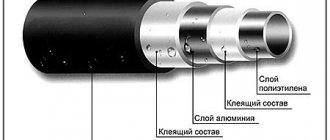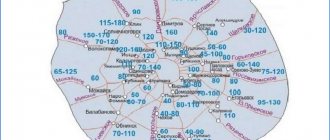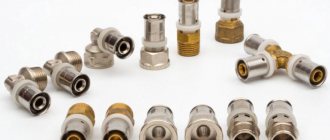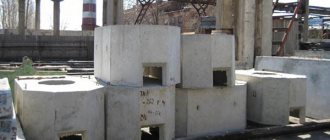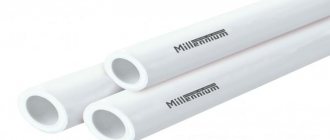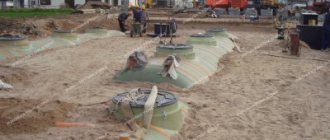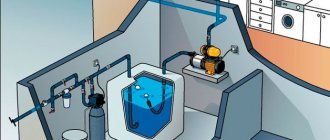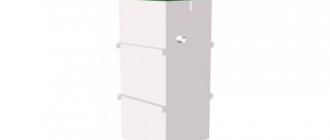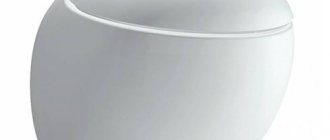To conveniently clean a sewer, such as a riser, you will need a sewer inspection. What it is and how it is installed will be discussed in this article!
The sewer system is a very important element of home improvement. Any malfunctions, blockages or other problems should be resolved literally in a matter of minutes. Since the sewerage system is a complex and extensive network of pipelines, it is necessary to have special devices that provide access to any point in the pipe for cleaning. Such an element is a sewer inspection, which allows you to solve problems that arise easily and quickly. Let's take a closer look at this important issue.
What is a revision
First of all, you should understand what a sewer audit is. In fact, this is a shaped element in the form of a tee, the middle part of which is not used to connect a branch pipeline line, but serves as a hatch for access to the internal cavity of the sewer system. This hatch is equipped with a cover that is secured either with 4 bolts or with a thread. An inspection in the sewerage system is not just a necessary, convenient and useful element; its presence is determined by the requirements of SNiP (in particular, SNiP 2.04.01-85) and other regulatory documents. According to the regulations, the audit is established:
- on the sewer riser of the upper and lower floors;
- in houses with more than 5 floors, inspection hatches should be installed every 3 floors;
- a sewer inspection must be present on horizontal pipelines with a diameter of 50 mm transporting wastewater at least every 15 meters in length;
- on pipelines carrying domestic wastewater, the distance between cleanings and inspections of internal sewerage is 12 m;
- for storm drainage or industrial wastewater, the distance should not exceed 10 m;
- on horizontal bends leading to several (3 or more) plumbing fixtures that are not equipped with their own devices for access to the system.
To comply with these requirements, it is necessary that the number of revisions (working holes) in the system be calculated and included in the working drawing at the design stage.
Sewer inspection: what is it for, standards, sizes and price
The sewer system becomes clogged over time. The reason for this may be operational debris arising from the deposition of fatty particles on the walls of the pipeline, which create a conglomerate of sand and household waste. In other cases, the cause of clogging may be improper installation: failure to comply with the slope, incorrect choice of the diameter of the elements of the drainage system, the appearance of rust and roughness of cast iron pipes.
Purpose of sewer inspection
Inspections for external sewerage made of plastic
When removing a debris plug that has blocked a section, an inspection of the sewer riser is used. Purpose of the device: to provide access for quickly removing blockages using cables or steel wire, which allow you to break through the obstacle and clear the drains without disassembling the pipeline.
The element is a part of a pipe in the form of a tee, which has a hole with a closing lid, through which stuck debris is removed using various devices. The audit is installed inside or outside the house. If for some reason you forgot about the inspection hatch when installing the sewer system, cleaning will require dismantling or damage to the pipeline, resulting in leaks and an unpleasant odor in the living room.
Installation standards
Installation of the revision is provided for by SNiP 2.04.01-85. In panel houses, hatches are installed across 3 bays; in a five-story building, their location in a vertical riser is limited to the first, third and fifth floors.
On horizontal sections, elements are placed at a distance of 8 or 10 m, as well as at turns and branches. Inspections with a diameter of 50 mm are installed on clean industrial wastewater every 15 m, on domestic pipelines - every 12 m, on contaminated industrial waters - with sections of 10 m. For elements with a diameter of 110 mm, under the same conditions, the following distances are accepted: 15, 20 and 12 m.
Inspection hatches in sewer pipes running under the ceiling of the corridor and in risers passing through public catering areas are not suitable.
Advantages and disadvantages of polyvinyl chloride revision
The polymer is made from ethylene and combined chlorine derived from salt. It has a number of advantages:
- long service life;
- a light weight;
- simple installation;
- resistance to sunlight and aggressive compounds.
Disadvantages of products made from polyvinyl chloride:
- high heat capacity of the material, ensuring rapid cooling of wastewater;
- fragility that appears at 0 degrees;
- When burned, toxic gas is released.
It is impossible to attach plastic products to metal pipes, since the polymer has difficulty withstanding mechanical stress, such as threads.
Advantages and disadvantages of polypropylene revision
The main advantages of the products are elasticity, lightness and strength, smooth and non-oxidizing surfaces. The disadvantages are hidden in high flammability, destruction under ultraviolet radiation and significant expansion when exposed to high temperatures.
Revisions with a diameter of 50 mm and a length of 115 mm are produced and are used in the installation of sewer drains for sinks, bathtubs and showers. For bathrooms, tees with a section size of 110 mm and a length of 185 mm are used.
Installation features
It is recommended to install hatches on all pipes and risers, as this will help to instantly deal with blockages. The most fragile part of the structure is the end part. The mechanical pressure of the cable when removing a debris plug can lead to damage to the revision, resulting in cracks appearing through which dirty water oozes and accumulated gases pass through.
The thickness of the element must be at least 2 mm. If the revision is installed in a channel or box, a hatch is made opposite the tee for free access. On the external sewer network, inspection wells are installed above the hatches. According to the rules of SNiP, the distance between them should be 10 m, and at an elevation - from 3 to 5 m. Vertical installation of revisions is used on risers inside the house.
Installation is performed according to the following algorithm:
- Check the presence of a rubber gasket at the connection point.
- The ends of the elements are cleaned of dirt.
- The smooth end is inserted into the socket to a depth of at least 10 mm.
- The risers are mounted at a distance of 20 mm from the wall and the revisions at a height of 1 m above the floor.
- Wiring is carried out with projections and branch sections, a pipeline with a diameter of 50 mm is located from the wall at a distance of 45 mm, with a cross section of 110 mm - at a distance of 75 mm.
- Plumbing fixtures are being installed.
In a private house, the drainage system requires an inspection of the sewer system on all risers, turns and external outlet in front of the well.
Exploitation
Access to the audit must always be free
Clogs form from rags dropped into the toilet, dumped contents of cat litter boxes, sand and household waste.
To remove the plug, an inspection located upstream of the water flow is used. It is opened and cleaning begins using the rotational movement of the cable. During the event, you should ensure that it takes place without the formation of loops. The rags are wrapped around the device and pulled out. In case of operational blockage, it is recommended to flush several buckets of hot water down the drain after cleaning to check. Water is supplied directly into the hatch of the device, since it has time to cool on the way from the installed plumbing.
Purpose
There is no need to spend a lot of time figuring out why a sewer inspection is needed - the element provides plumbers with access to the internal space of sewer pipelines and is used to quickly remove blockages. In most cases, the problem can be solved with the help of a regular plunger, but sometimes a blockage occurs where it can only be eliminated with the help of a plumbing cable. There are many reasons for blockages, the main ones being fatty deposits on the inner walls of pipelines and small irregularities, roughness or differences in cross-section at the points where system elements are connected.
Blockages appear in the form of small thickenings of plaque on the walls and quickly progress, blocking the entire section of the sewer pipe. If this problem appears in the vertical riser of an apartment building, it will be a disaster for the residents of one of the apartments, especially if it is located on the ground floor. All drains that cannot exit through the riser find their way out through the siphons of toilets and other plumbing fixtures.
example
The presence of inspection hatches makes it easier and faster to troubleshoot problems. Working with a long cable is difficult and ineffective, but using inspection hatches you can quickly get to the problem area.
How to clean pipes?
It is recommended to clean from top to bottom.
Cleaning sewer pipes through inspection.
The algorithm of actions is as follows:
- Remove the cover from the revision.
- Insert the end of the cable into the hole and advance it, combining rotational and translational movements. In this case, you need to make sure that it does not twist into a loop. It is more convenient to work with a partner - 1 person pushes the cable into the pipe, and the other rotates the handle.
- When the cable hits a traffic jam, it is actively moved back and forth until the traffic jam is broken. Rags stuck in the pipe are wrapped around the tool and pulled out. Remove the cable by rotating it in the same direction as when moving deeper into the pipe.
- After cleaning, it is recommended to rinse the pipe with hot water and then close the inspection lid well.
Professionals use cables with different removable ends, which allow them to remove blockages and clean the pipe cavity from grease deposits.
Kinds
The sewer inspection is a separate shaped element, which is a tee with a socket at one end and an inspection hatch at the side outlet. Initially, the element was made of cast iron. In some old houses, such inspections still exist in some places. The modern appearance of the element is somewhat different - the sewer inspection cover has fundamentally changed. If in cast iron systems it had an oval shape and was attached through rubber gaskets to the body with 4 bolts, then the current plastic covers are round and are attached to a threaded connection (simply screwed onto the outlet). This simplifies and speeds up the work of the plumber.
Materials for the manufacture of modern types of revision can be:
- PVC;
- polypropylene.
The undoubted leader is the polypropylene product. It can last up to 50 years, withstand temperature changes and mechanical loads without destruction or deformation. The polypropylene revision can withstand heating up to 950°. There is a standard size for sewer pipes with a diameter of 50 mm (the horizontal part of the system to which bathtubs, sinks, kitchen sinks, etc. are connected), and with a diameter of 110 mm (for toilets and risers).
There are varieties of elements - inspection and cleaning of sewers, the differences between which are minimal. The inspection is used not only to remove blockages, but also to gain access to the inside of the system in order to carry out repairs or other needs. Cleaning is an element that is equipped with an inclined outlet and is used only to remove blockages. If the cable can be directed from the inspection in any direction, then cleaning sets the only possible direction, so it is usually installed at the end points of the pipeline. The external difference between cleaning and inspection is immediately noticeable by the inclined middle outlet. The cleaning device does not have its own cover; usually an end cap is installed, fixed with mastic.
You may also like: The kitchen sink smells like sewage - what to do and how to fix it?
Sewer inspection: installation features
For the normal functioning of the sewer system, it is necessary to properly design and build it. In addition to the main elements - pipes - many auxiliary parts are used. One of them is a sewer inspection. Despite its apparent insignificance, it plays perhaps the most important and responsible role.
An important and necessary shaped element
The need to install a revision
Sewerage is a rather complex engineering network that can cause many different problems during operation. Most often, troubles arise when the sewer system for discharging used water is assembled incorrectly (especially if it is installed by inexperienced craftsmen with their own hands). Also, errors in operation are often made, the cost of correcting which reaches the cost of a new system.
The main problem in most cases is blockages, that is, obstruction of sewer pipes due to the accumulation of various debris. Removing it is not difficult; the question is how to get to the desired section inside the drain system, because in most cases it has a branched system and considerable length.
Without an audit, proper operation of the sewer system is not guaranteed.
To solve the problems listed above, an inspection of the sewer pipe is used.
Part appearance
The sewer inspection is a special shaped part made in the form of a tee, the side branch of which is closed with a special lid.
Previously, when the main material for the manufacture of sewer pipes was cast iron, this part had a more complex shape:
- The rectangular hole in the pipe was closed with a special cast iron cap, which was fixed in place using four massive bolts.
- Tightness was ensured by a rubber gasket covering the entire outlet hole..
- Tightening the cover bolts after inspecting the pipes or removing the sewer blockage was done in a special way - crosswise . Otherwise, achieving the required degree of tightness was problematic.
Photo of cast iron revision
Please note! Currently, cast iron pipes have practically gone out of use, giving way to PVC products, which have many advantages.
Accordingly, the design of the revision used has also changed.
Features of a modern shaped part:
- unlike cast iron, plastic is used;
- the shape has changed.
Currently, the hole has become round due to the casting features of the product. In addition, the cover is attached not with bolts, but with ordinary threads. This simplifies the maintenance of the sewer system and ensures the proper level of tightness.
Varieties of design
For the installation of internal sewerage, polypropylene revisions are used, painted in a characteristic gray color. Parts intended for outdoor installation are brown. However, in the latter case (for servicing main sewer canals), special inspection wells are installed.
An inspection well is used to monitor the condition of the external sewerage system.
Therefore, the part has only two varieties:
- diameter 110 mm;
- with a diameter of 50 mm.
For those who are especially meticulous, we present all the technical characteristics.
| Diameter, mm | Weight, kg | Length, mm |
| 50 | 0,075 | 115 |
| 110 | 0,33 | 185 |
The installation procedure for this element is no different from the process of connecting all other parts. The main thing is to choose the right installation location.
The main purpose of the audit is to monitor the condition of the sewer system and, if necessary, clean it. Therefore, it is important to provide convenient access to the unit, because sometimes large and bulky devices are used to flush pipes.
These elements can be installed on both horizontal and vertical pipes. You just need to achieve the required degree of tightness of all joints.
Revision with a diameter of 50 mm
Let us list the main advantages of polypropylene revision:
- able to withstand high temperatures of sewage (up to + 95 degrees Celsius);
- has a smooth internal space, which avoids blockages during the passage of wastewater;
- does not require painting or other anti-corrosion measures;
- has a long service life - more than 50 years;
- withstands heavy loads and does not collapse under the influence of low ambient temperatures;
- tolerates exposure to various chemicals well.
Please note! Installing revisions is not a whim, but a necessity.
Saving on the purchase and installation of these parts in the sewer system can lead to its complete inoperability in the future, which will require considerable costs to correct the situation.
Instructions for the design and installation of sewer systems (SNiP 2.04.01-85) require the mandatory installation of this shaped element in the following cases:
- each time the waste pipeline is turned at an angle of 45 degrees or more;
- at the base of each vertical pipe;
- when connecting two sewer pipes into one;
- on a straight pipeline with a diameter of up to 100 mm - every 15 meters, more than 100 mm - every 30 meters;
- on a trap installed at the end of the sewer system of a private house.
Remember that when laying a pipeline hidden, to access the inspection, you should equip an inspection well with a hatch measuring at least 30x40 cm.
Inspection of external sewerage
As for internal sewerage, the requirements are as follows:
- central risers - on the first and last floor in the absence of additional branches;
- central risers with tees - on each floor;
- on pipes to which 3 or more plumbing fixtures are connected - at the beginning of the section;
- on turns - if a piece of pipe cannot be cleaned through another hole.
Installation process
Installing an inspection in the sewer system does not cause difficulties:
- clean the socket and smooth end of the pipe from dust and debris;
- check whether there is a rubber sealing ring installed in the socket, which is necessary to ensure the tightness of the system;
- lubricate the smooth end of the pipe with sealant and insert it into the inspection socket until it stops;
To install, just insert the smooth end into the socket
- mark on the pipe the place where the bell cut will be located;
- pull the pipe back about 1 centimeter.
Pull the pipe out of the socket slightly
Installation is complete.
Installation
The element is installed into the system in the usual way, the same way as conventional pipe parts or tees are installed. Installation is not difficult and does not take much time - one end is inserted into the socket of the previous element, and the next part of the pipeline is inserted into the revision socket. The best option is to assemble the system during its creation, when the workflow is carried out consistently and does not require additional effort. Often the stumbling block is the height of the installation of the inspection on the sewer riser. Many users are interested in where they can find out exactly how many centimeters from the floor should be to the inspection hatch. SNiPs or other reference books determine only the distance between the inspection installation points horizontally or vertically, on the inside or outside of the system. What the installation height from the floor should be is not regulated anywhere. Some experts give values of 1.2-1.5 m, but one can argue with these values. The main criteria should be:
- ease of work for the plumber;
- the installation level must exceed the height of the toilet and sink.
At the same time, there are no specific instructions on this matter anywhere, so each specialist has his own idea of the correct height for installing the revision. Ultimately, where exactly to make an audit is decided differently in each case. It is important to remember that the cable can be directed both downwards and upwards during cleaning, so a height that is too high is just as inconvenient as one that is too small.
Definition of "cleansing"
This is a tee at an angle of 90 or 135 degrees, with one or two bends and with a kind of window at the end of the pipe. The tee is closed on top with a sealed lid on mastic. For unhindered work on removing blockages, the lid opens and through the hole that appears, pockets of contamination are removed. The cleaning hatch is made of polypropylene or polyvinyl chloride. The same material is used in the production of sewer pipes. The hatch comes in two types: gray and orange. Gray for installation inside buildings, orange for outside. When choosing it, you need to be guided by the diameter of the sewer pipes.
Features of use
The operation of the audit is sporadic. There are many elements that have never been used during their entire service life, so home craftsmen have no experience working with such devices. There are no fundamental requirements for the use of revisions, the only condition is accuracy and attention - it is easy to damage the edges of the outlet with a cable, which will break the tightness of the connection between the cover and the pipe. This can cause a bad odor and leaks, which will require labor-intensive replacement of the entire element. During cleaning, you should take into account the danger and act as carefully as possible, then the result of the work will be fully expected and favorable.
How to clean a hatch
If you are faced with a sewer blockage in your plumbing, you must remember that the obstruction is always located above the place where the blockage formed. Therefore, it is necessary to study the diagram of your system and check the hatches - only then can you accurately and quickly determine where the problem occurred.
It is best to start cleaning the pipes closer to the place where the blockage has formed (near the closest hatch).
You can use an electric drill or plumbing wire as a tool. To be effective, clean the hatch that has the most direct path to the blocked area. A large amount of drainage can accumulate above the area where the blockage has formed. Before cleaning the underlying hatch, wait a few hours (after the last time you used the sewer). During this time, some of the water will pass through the place where the plug forms. Otherwise, you will end up with stagnant water after the blockage is cleared.
Sewer inspection may vary in color
How to properly clean a drain in a manhole:
- Place rags and newspapers around the work area. When you unscrew the screws on the manhole cover in preparation to open it, waste water may pour out on you. A bucket, mop, rags and newspapers will help you quickly remove them (they will absorb waste).
- Remove the cap and use the tool to move in the direction of the clog. When you reach the blockage, try to push it to the inspection hatch located nearby. Pull it out or try to destroy its integrity.
- Next, you need to clean the pipes from any remaining dirt and plugs. For this, a strong stream of water supplied from a rubber hose is best suited. Since sewer pipes are laid on a slope, flush from the hatch located above the place where the blockage is located.
Cleaning a sewer using a hatch is an effective and inexpensive solution for clogged sewer lines.
What are the advantages of revisions?
During the production of revisions, a special type of steel is used. Due to this, the equipment acquires excellent performance characteristics and the following parameters:
- increased strength;
- resistance to the influence of chemical compounds. For example, the equipment can withstand constant exposure to detergents and cleaners, acid-containing compounds;
- resistance to rust, due to which the service life is significantly increased;
- ease of installation (but it is better to entrust this only to a specialist who knows what to do).
Another advantage is that stainless steel revisions have an aesthetic appearance. More details can be found on the manufacturer’s website https://www.inoxpark.ru/catalog/stainless_steel_inspection/inspection/.
Exploitation
Access to the inspection must always be free.
Blockages are formed from rags dropped into the toilet, dumped contents of cat litter boxes, sand and household waste.
To remove the plug, an inspection located upstream of the water flow is used. It is opened and cleaning begins using the rotational movement of the cable. During the event, you should ensure that it takes place without the formation of loops. The rags are wrapped around the device and pulled out. In case of operational blockage, it is recommended to flush several buckets of hot water down the drain after cleaning to check. Water is supplied directly into the hatch of the device, since it has time to cool on the way from the installed plumbing.
To carry out cleaning activities in an apartment building in the absence of residents from the lower floors, audits are installed in the basements.
If during operation problem areas are identified where debris collects, a new hatch is installed: the sewer pipeline is cut off above the socket, the cut is cleaned of irregularities, the chamfer is removed and an inspection is installed in the extension. For subsequent connection, use a pipe.
In old houses, the bolts on cast iron hatch doors rust, so they are cut off with a grinder and, after cleaning, replaced with brass ones. If the bolts are not at hand, the cover is tightened with wire. The rubber gasket can be made from a car inner tube.
Source
